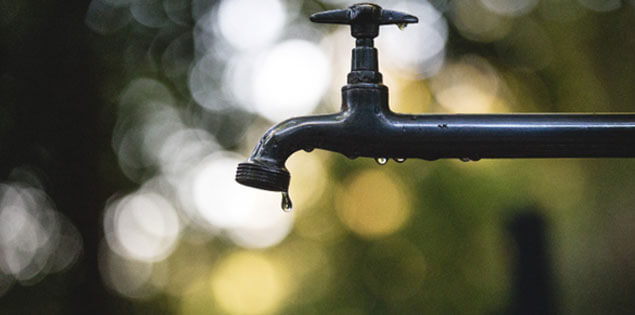According to the WMO’s State of Climate Services 2021, more than 20 per cent of the world’s river basins experienced either rapid increases or declines in their surface water area in 2020. Against the backdrop of climate change, water-related challenges are becoming multifaceted. This is evidenced by the fact that in 2020, three quarters of new displacements were driven by flooding and drought, compared to a quarter relating to conflict. Furthermore, climate change is expected to lead to warmer weather conditions in the sub-tropical regions along with more frequent and longer droughts. This can be seen with India emerging as one of the most water-stressed countries ,along with those in Middle East, Central and North Africa.
Apart from regional disparities, an urban-rural divide in water access is palpable. Most urban dwellers receive safe drinking water for domestic use, whereas rural populations seldom have reliable water sources in their vicinity. This can have adverse effects on other economic sectors, such as food and agriculture, at a national as well as sub-national level.
Given the climate and economic vulnerability of rural populations, there is a growing risk of these populations being pushed to greater poverty. Furthermore, a lack of effective delivery mechanism for adaptation finance at a local level is a major pain point, arising due to a lack of access to innovative financial instruments and the local governments’ inability to absorb the incremental costs, among other reasons.
Role of community level, low-carbon solutions
Community-level solutions can help address these challenges. Decentralized models allow local communities to take ownership, making interventions sustainable in the long-term. For example, water management systems such as stepwells, water tanks and earthen dams are some traditional methods of water conservation for domestic and agricultural use. These are examples of low-cost technologies which were created by ingenious local communities centuries ago and are still serving well. They also happen to be low-carbon technologies, however, are less recognized in mainstream markets.
Financing such local-level solutions can pave the way for water security. If scaled and replicated by leveraging innovative financing mechanisms, with local banks as key intermediaries, such interventions can be democratized in rural contexts.
Role of new financing mechanisms
Local adaptation needs systemic change and sustained finance. In this regard, microfinance instruments, supported by concessional finance may prove to be an effective vehicle in facilitating adaptation funds. This is because many countries lack the financial readiness to channelize microfinance funds. Facilitated by multilateral development banks, capacity-building of local banks would also lead to larger penetration of targeted funds. For instance, in Jamaica, the Inter-American Development Bank-led Adaptation Programme and Financing Mechanism project allowed allocation of concessional finance to a private sector co-operative mutual bank for climate resilient projects.
Venturing into new and innovative markets can be challenging for both lenders and borrowers. Concessional finance can also be used to absorb first mover costs, thus de-risking and unlocking the markets for more investments. Microfinance institutions can be intermediaries to receive funds to on-lend, along with local banks. Government bodies and NGOs can be the implementing agencies as they bear local knowledge.
For example, performance-based grants delivered using the Local Climate Adaptive Living Facility (LoCAL) enabled local governments in Bangladesh to provide water treatment plants to supply communities with clean drinking water to hundreds of families. LoCAL functions by establishing a standard, internationally recognized country-based mechanism to channel climate finance to local government authorities in developing countries.
In this way, multilateral development banks and microfinance institutions partnering with relevant NGO’s and government organizations would provide the technical expertise in implementation, strengthening action and enhancing effectiveness of local adaptation solutions.
Bibliography:
https://gca.org/how-ancient-water-conservation-methods-are-reviving-in-india/
https://drive.google.com/file/d/1S5npQyg00TAD8TWBAaFJJbtfmWiWuETh/preview
https://www.worldwateratlas.org/curated/water-as-leverage/
https://www.uncdf.org/article/7713/local-annual-report-2021
https://www.cfr.org/backgrounder/water-stress-global-problem-thats-getting-worse
https://geographyandyou.com/ten-traditional-water-conservation-methods/
https://archive.ipcc.ch/publications_and_data/ar4/wg2/en/ch3s3-5-1.html

